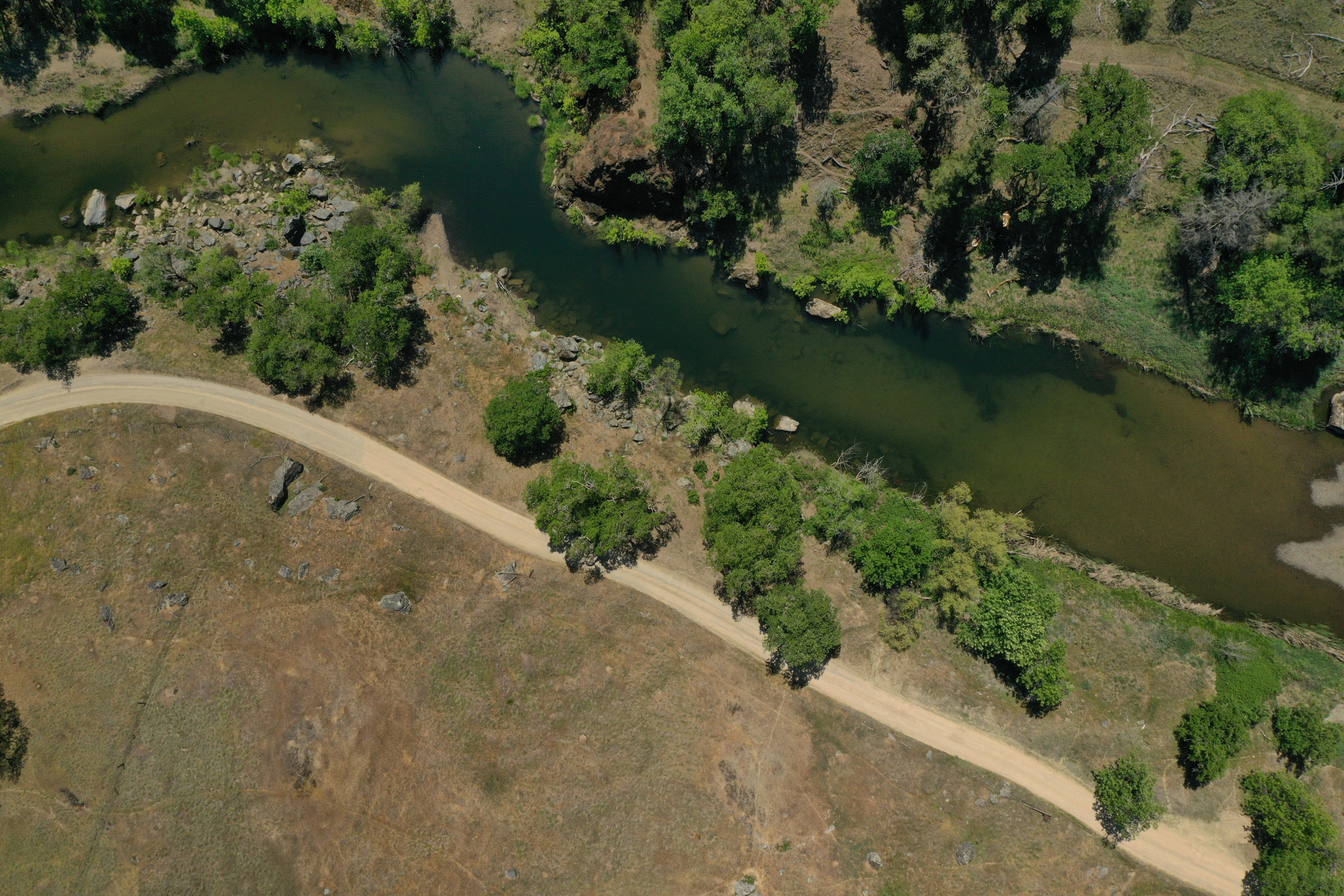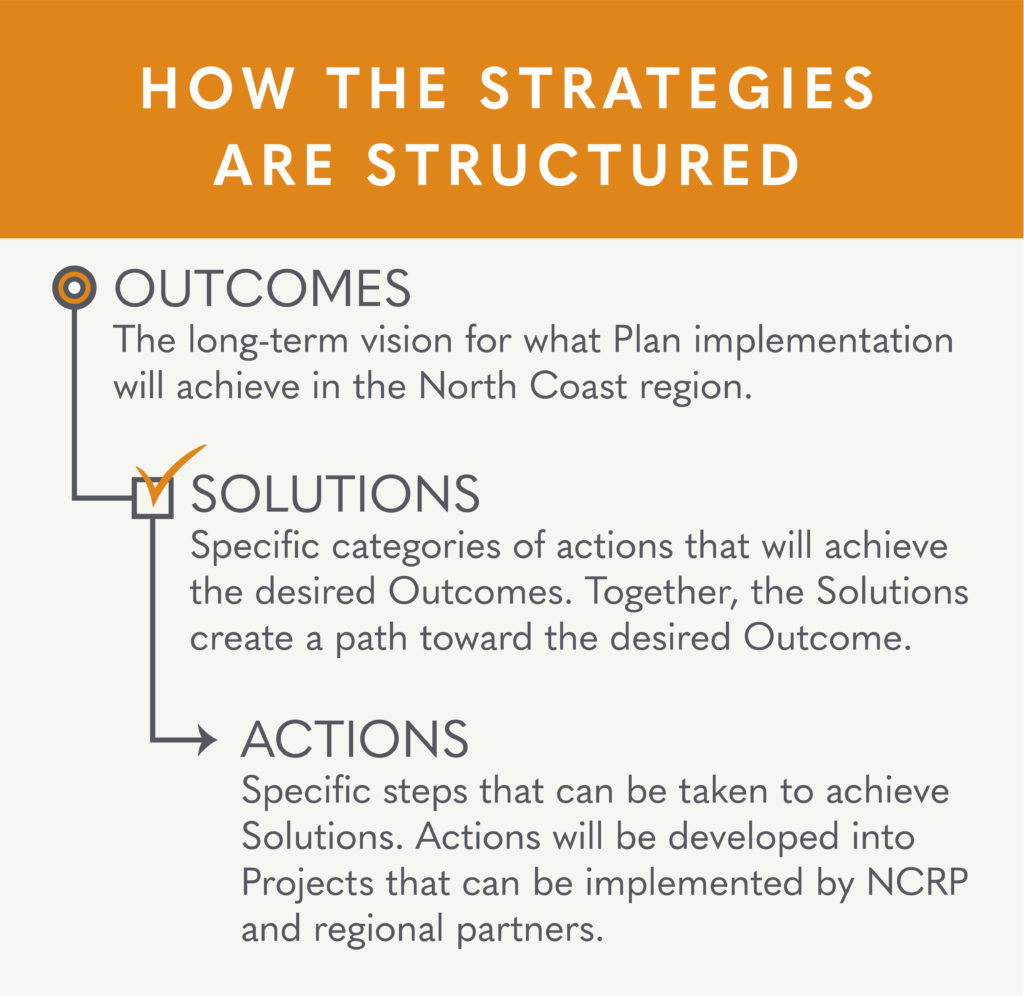Introduction
Forests in the North Coast Region face multiple stressors, including uncharacteristic large wildfires, droughts, pests and diseases, invasive species, and land use changes, including increased development in the WUI. Forest management during the colonial era, including more than a century of fire exclusion, as well as climate change, have exacerbated these problems. At the ecosystem scale, these stressors are leading to the loss and conversion of forest land and loss of the many ecosystem services provided by healthy forests.
Restoring healthy and resilient forests requires a profound change in how forests are managed. The right tools must be applied at the right time and place, by the array of entities in the region with experience and responsibilities in wildfire management. Tribes should be supported in reinstating Indigenous land stewardship strategies, including cultural burning. All landowners and land managers, public and private, should be supported in applying adaptive management to restore fire frequency and reduce hazardous fuel loads over the long term. In order to do so, it is imperative to increase local capacity, including a cadre of well-equipped and trained natural resources professionals who will steward the land, with short- and long-term use of vegetation management, beneficial fire, and the increased use of managed fire for resource benefits.
From “Increase Pace and Scale” to “Increase Pace, Scope, and Scale”
The imperative to “increase the pace and scale” of wildland fuel treatments has become a common theme in natural resource management. While it is undoubtedly true that the “pace and scale” of landscape-level treatments to create healthy, functional, and fire-resilient ecosystems is critical, it is important to qualify and update this statement. Resilient and healthy forests result from reestablishing pre-colonial fire regimes and reinstating land stewardship practices used by California Tribes since time immemorial, which value interconnected and healthy watersheds and biodiversity, including culturally important species. Increasing “pace and scale” cannot refer simply to removing hazardous fuel loads, but must also include the reintroduction of local Indigenous knowledge and practice and Tribal stewardship strategies with leadership from local Tribes, adapting to the changing climatic and fuel conditions which may influence fire behavior and intensity. Some species need to be reduced, thinned, or removed, while others need to be reintroduced or increased as they are critical cultural resources which also play a role in ecosystem health, carbon sequestration, and regional fire resilience. Given excessive hazardous fuel loads increasing since colonization, North Coast forests need to be brought back into balance. Restoration of habitats lost to a century of fire suppression and conifer encroachment (i.e., native grass and forb meadows, wet meadows, and oak woodlands) should be encouraged where feasible and practical. The reintroduction of beneficial fire is central to all these efforts.
Therefore, with the encouragement of our Indigenous partners, we use the phrase “Increase pace, scope, and scale” rather than “Increase pace and scale” in this plan. We do this in order to acknowledge the need for an increase in both the quantity of land treated, and the types of stewardship treatments practiced. Activities to reduce hazardous fuel loads should also create and maintain more natural landscape conditions that are resilient to fire, pests, and climate stressors, rather than focusing exclusively on mechanical thinning and the removal of forest biomass to achieve reduction in hazardous fuel loads. A better understanding of pre-fire exclusion era forest structure and process is emerging, and will guide the restoration of fire processes at the landscape scale in a contemporary context.
“Indigenous cultural practitioners have applied fire to this landscape since time immemorial, influencing ecosystems with practices grounded in indigenous science, often referred to as Traditional Ecological Knowledge. Fire ecology, a budding western science, acknowledges the complexity inherent in the relationships between living organisms and fire, a concept which Indigenous cultures have long worked with. As we collectively confront climate change and its effects on our fire-dependent ecosystems, the state of the environment cannot be uncoupled from a century of fire suppression and the criminalization of Indigenous Peoples for their use of cultural burning and other lifeways rooted in place. . . Fortunately, the cultural and legal landscape is changing. Indigenous leaders are reclaiming the right to use the ancestral knowledge and practices essential to this region. Fire will be a part of life for the foreseeable future. By following the guidance of Indigenous leaders, we can ally with fire to restore ecosystem health and connectivity, encourage fire-resilient plant, animal, and human communities, and enhance climate resilience.”
– Deja Malone-Persha, quoted in River on Fire: Impacts and Adaptations in a Fire Prone Landscape. Salmon River Restoration Council Winter 2021-22 Newsletter, p. 12


